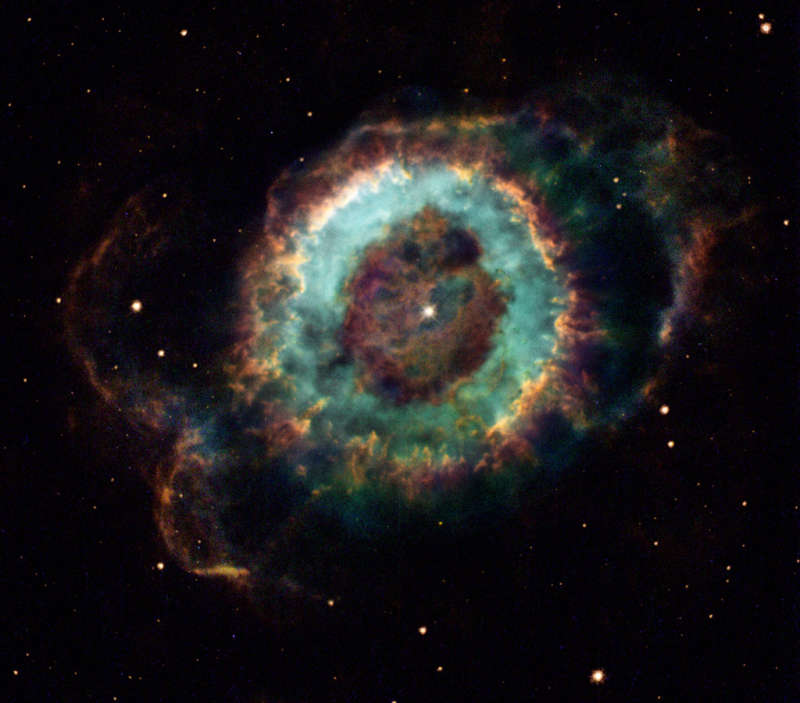 |
Астронет: Астрономическая картинка дня NGC 6369: туманность Маленькое Привидение http://variable-stars.ru/db/msg/1391266/eng |
Credit & Copyright: Hubble Heritage Team,
NASA
Explanation:
Wraithlike
NGC 6369 is a faint apparition in night skies popularly
known as the Little Ghost Nebula.
It was discovered by 18th century astronomer
Sir William Herschel as he used a
telescope to explore the medicinal
constellation
Ophiucus.
Herschel historically classified the round and planet-shaped
nebula as a Planetary Nebula.
But planetary
nebulae in general are not at all related to planets.
Instead they are gaseous shrouds created at the end
of a sun-like star's life,
the dying star's outer layers expanding
into space while its core shrinks to become a white dwarf.
The transformed
white dwarf star, seen near the center,
radiates strongly at ultraviolet wavelengths and powers the expanding
nebula's glow.
Surprisingly complex
details and structures of NGC 6369 are revealed in
this
tantalizing image
composed from Hubble Space Telescope data.
The nebula's main round structure is about
a
light-year across
and the glow from ionized oxygen, hydrogen, and nitrogen atoms
are colored blue, green, and red respectively.
Over 2,000 light-years away, the
Little
Ghost Nebula offers a glimpse
of the fate of our Sun, which could produce its own planetary
nebula about 5 billion years from now.
Authors & editors:
Robert Nemiroff
(MTU) &
Jerry Bonnell
(USRA)
NASA Web Site Statements, Warnings,
and Disclaimers
NASA Official: Jay Norris.
Specific
rights apply.
A service of:
LHEA at
NASA /
GSFC
& Michigan Tech. U.
